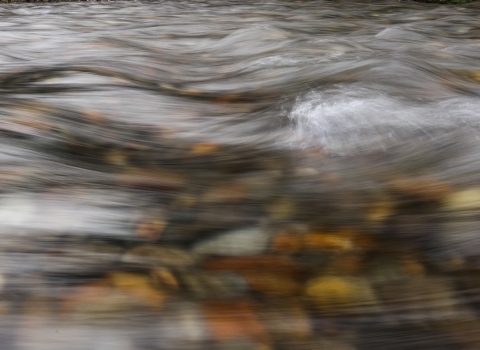As part of the process mandated by the Endangered Species Act (ESA), the U.S. Fish and Wildlife Service will conduct five-year status reviews of 67 endangered or threatened fish, wildlife, and plants. These species are found primarily in the Southeastern United States, Puerto Rico, and the U.S. Virgin Islands, but are also known to occur in Illinois, Indiana, Kansas, Massachusetts, Missouri, New Jersey, Oklahoma, Ohio, Virginia, and West Virginia and internationally in Bermuda and the British Virgin Islands.
The public is invited to provide information and comments concerning these species on or before July 10, 2023. However, the Service encourages the submission of new information on any species at any time.
These five-year reviews will ensure listing classifications under the ESA are accurate and will recommend changes in status, where appropriate, based on the latest science and analysis. In addition to reviewing the classification of these species, five-year reviews present an opportunity to track species’ recovery progress. These reviews may benefit species by providing valuable information to guide future conservation efforts.
Information gathered during a review can assist in making funding decisions, considerations related to reclassifying species status, conducting interagency consultations, making permitting decisions, and determining whether to update recovery plans, and other actions under the ESA.
The 52 endangered and 15 threatened fish, wildlife, and plant species in this announcement are listed below:
Endangered Fish and Wildlife: Coqui llanero, Mississippi sandhill crane, Puerto Rican broad-winged hawk, Bermuda petrel, Puerto Rican plain pigeon, ovate clubshell, southern clubshell, fanshell, Carolina heelsplitter, triangular kidneyshell, Coosa moccasinshell, oyster mussel, dark pigtoe, southern pigtoe, ring pink, Atlamaha spinymussel, Benton County Cave crayfish, Hell Creek Cave crayfish, Cumberland darter, vermilion darter, yellowcheek darter, Chucky madtom, smoky madtom, Alabama beach mouse, Anastasia Island beach mouse, Florida salt marsh salt marsh
Salt marshes are found in tidal areas near the coast, where freshwater mixes with saltwater.
Learn more about salt marsh vole, St. Croix ground lizard.
Endangered Plants: Aristida chaseae, Aristida portoricensis, Astragalus bibullatus, Baptisia arachnifera, Buxus vahlii, Campanula robinsiae, Clematis morefieldii, Conradina etonia, Cyathea dryopteroides, Daphnopsis helleriana, Goetzea elegans, Ilex cookii, Isoetes louisianensis, Isoetes melanospora, Isoetes tegetiformans, Juglans jamaicensis, Justicia cooleyi, Lyonia truncata var. proctorii, Myrcia neothomasiana (=Calyptranthes thomasiana), Nolina brittoniana, Paysonia (=Lesquerella) perforata, Rhododendron chapmanii, Schwalbea americana, Sisyrinchium dichotomum, Vernonia proctorii.
Threatened Fish and Wildlife: frosted flatwoods salamander, Alabama moccasinshell, orangenacre mucket, finelined pocketbook, Ozark cavefish, spotfin chub, trispot darter, Atlantic salt marsh snake, eastern indigo snake.
Threatened Plants: Gesneria pauciflora, Gratiola amphiantha (=Amphianthus pusillus) Hudsonia montana, Paysonia (=Lesquerella lyrate), Scutellaria floridana, Solidago spithamaea.
The five-year reviews seek information on: (1) species biology, including population trends, distribution, abundance, demographics, and genetics; (2) habitat conditions, including amount, distribution, and suitability; (3) conservation measures that have been implemented; (4) threat status and trends; and, (5) other new information, data, or corrections, including taxonomic or nomenclatural changes; identification of erroneous information contained in the ESA list; and improved analytical methods.
The Federal Register notice announcing the status review of these 67 federally listed fish, wildlife and plants is available online at https://www.regulations.gov/, search for Docket # FWS-R4-ES-2023-N013.
Comments and materials on any of the species listed above can be submitted to the appropriate contacts listed in the Federal Register notice. These notices usually request that information be submitted within a certain timeframe in order to ensure that we receive it in time to consider the information in our review. However, the Service encourages the submission of new information on any species at any time.
For general information, contact Aaron Valenta, via phone at (404) 679–4144, via email at aaron_valenta@fws.gov, or via U.S. mail at U.S. Fish and Wildlife Service, 1875 Century Boulevard, Atlanta, GA 30345. Individuals in the United States who are deaf, deafblind, hard of hearing, or have a speech disability may dial 711 (TTY, TDD, or TeleBraille) to access telecommunications relay services. Individuals outside the United States should use the relay services offered within their country to make international calls to the point-of-contact in the United States.
The mission of the U.S. Fish and Wildlife Service is working with others to conserve, protect, and enhance fish, wildlife, plants, and their habitats for the continuing benefit of the American people. For more information on our work and the people who make it happen, visit www.fws.gov. Connect with our Facebook page at www.facebook.com/usfwssoutheast, follow our tweets at www.twitter.com/usfwssoutheast, watch our YouTube Channel at http://www.youtube.com/usfws and download photos from our Flickr page at http://www.flickr.com/photos/usfwssoutheast.


